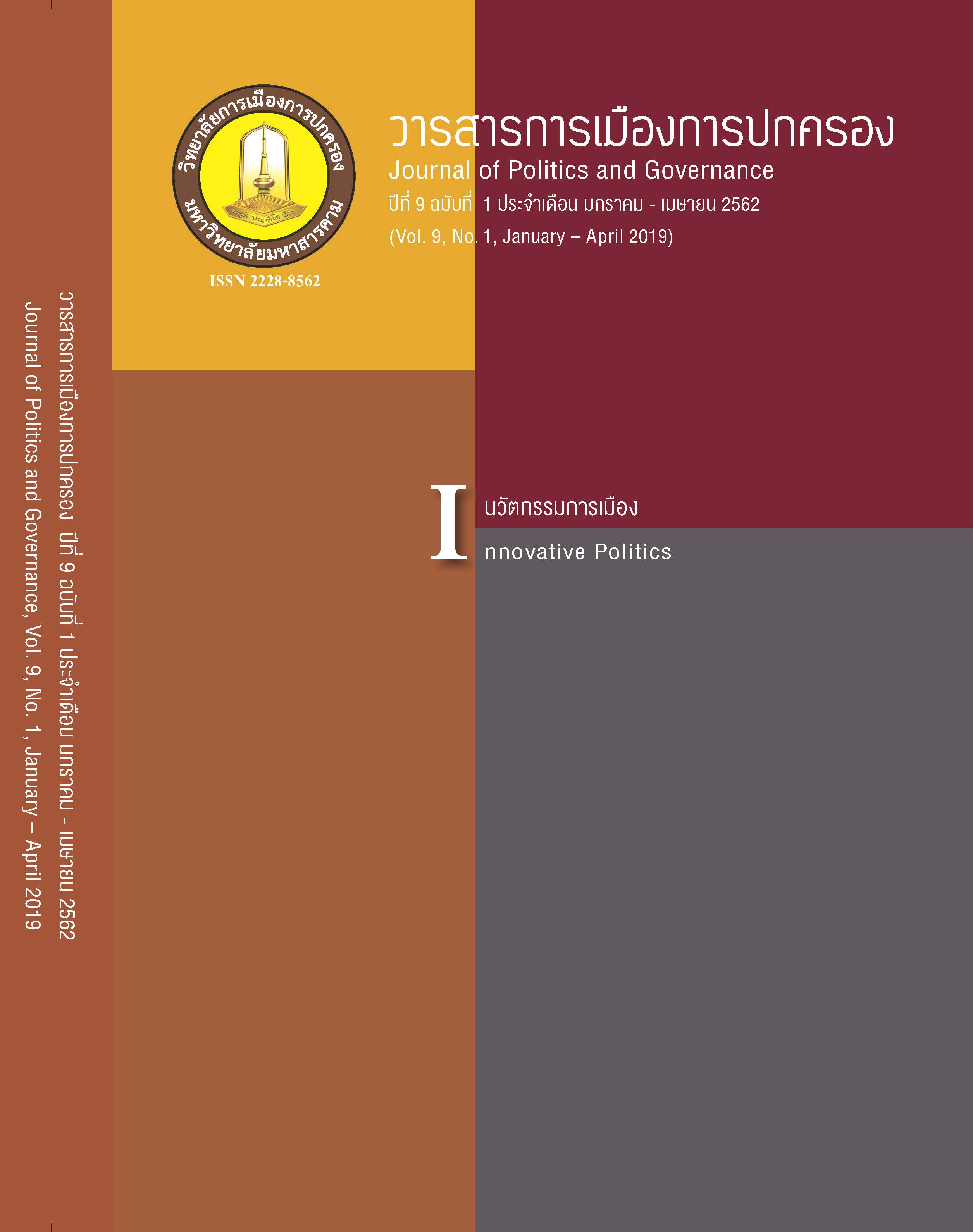Reclining Buddha: Conservation and Restoration by Participation of the Community in the Northeast of Thailand
Main Article Content
Abstract
The Reclining Buddha was one of crucial statuary patterns of Buddha images in the study of history - archaeology. Reclining Buddha images were spiritual anchors for northeastern people for a long time. The study of the Reclining Buddha history and the enhancement of community participation would be important for conservation of Buddhism. This qualitative research aimed to study the history of Reclining Buddha images and sculptures in the northeastern part of Thailand, and to find out a guideline for community participation in preserving and restoring the Reclining Buddha images. The data were collected through document analysis, surveys, interviews, participant observations, and focus group guidelines. Participants were key informants, general informants, and general informants from five provinces in the northeastern part of Thailand. Then, the collected data were verified by the triangulation technique. The study revealed that the Reclining Buddha images in the northeastern part of Thailand could be divided into three main periods: the Dvaravati period, the folk art period, and the present period. The Reclining Buddha characteristics were the combinations of thirty-two characteristics of a Great Man (Mahapurusa Laksana) and local arts. The communities played important roles in conservation and restoration of the Reclining Buddha images with the support from local organizations. To conserve these cultural heritages, the stakeholders should enhance conservation activities, academic activities, and travel activities. Moreover, the development of Buddhism temples to be cultural learning centers would provide more tourist attractions that made more incomes to the communities.
Article Details
References
คึกเดช กันตามระ. (2535). การศึกษาวิวัฒนาการ และการวิเคราะห์ความสัมพันธ์ของศิลปะและสังคมจากรูปลักษณ์พระพุทธปฏิมากร. กรุงเทพฯ : สถาบันไทยอุดมศึกษาจุฬาลงกรณ์มหาวิทยาลัย.
จิตร บัวบุศย์. (2503). ศิลปพระพุทธรูปในประเทศไทย. พระนคร: อำพลวิทยา.
จำนงค์ ทองประเสริฐ. (2534). ประวัติศาสตร์พระพุทธศาสนาในเอเชียอาคเนย์. กรุงเทพฯ:คุรุสภาลาดพร้าว.
ชัชวาล ศรีจันทร์โคตร. (2526). พุทธศาสนาในไทย. กรุงเทพฯ: ธีรพงษ์การพิมพ์.
เชษฐ์ ติงสัญชลี. (2554). กำเนิดพระพุทธรูปในโลก: ปฐมบทแห่งพุทธศิลป์สยาม. กรุงเทพฯ: เมืองโบราณ.
น.ณ ปากน้ำ. (2533). พุทธปฏิมากรรมในประเทศไทย. กรุงเทพฯ: เมืองโบราณ.
พระโสภณคณาภรณ์ (ระแบบ ฐิตญาโณ). (2530). ประวัติศาสตร์พระพุทธศาสนา (สมัยโบราณ-สมัยพระจอมเกล้าเจ้าอยู่หัว). กรุงเทพฯ: โรงพิมพ์การศาสนา.
พิริยะ ไกรฤกษ์. (2542). การปรับเปลี่ยนยุคสมัยของพุทธศิลป์ในประเทศไทย. เมืองโบราณ. 25(35), เมษายน-มิถุนายน
พิเศษจำนง ทองประเสริฐ. (2554). ประวัติศาสตร์พระพุทธศาสนาในเอเชียอาคเนย์. พิมพ์ครั้งที่ 3. กรุงเทพ: สหธรรมมิก.
รุ่งโรจน์ ธรรมรุ่งเรือง. (2552). พระพุทธรูปและพระพิมพ์ทวาในภาคอีสาน. วิทยานิพนธ์ ปร.ด. กรุงเทพฯ: มหาวิทยาลัยศิลปากร.
รุ่งโรจน์ ธรรมรุ่งเรือง. (2553). ศิลปะและวัฒนธรรมทวารวดีภาคตะวันออกเฉียงเหนือ. กรุงเทพฯ: ภาควิชาประวัติศาสตร์ศิลปะ คณะโบราณคดี มหาวิทยาลัยศิลปากร.
สมบัติ จำปาเงิน. (2545). พระพุทธปฏิมาเมืองไทย. กรุงเทพฯ : สุวีริยาสาส์น.
สมพร อยู่โพธิ์. (2519). พระพุทธรูปปางต่าง ๆ. พระนคร : ชวนพิมพ์.
สารานุกรมไทยสำหรับเยาวชนฯ เล่มที่ 29 เรื่องที่ 2 พระพุทธรูป ความหมาย ที่มา และคติการสร้างพระพุทธรูป. (ม.ป.ป.). สืบค้นจาก http://kanchanapisek.or.th/kp6/sub/ book/book.php?book=29&chap=2&page=t29-2-infodetail01.html.
แหล่งโบราณคดีบ้านเชียง. (ม.ป.ป). สืบค้นจาก http://www.udonthani.com/ banchiang.htm.
สิริวัฒน์ คำวันสา. (2541). พระพุทธศาสนาในประเทศไทย. กรุงเทพฯ:โรงพิมพ์สหธรรมิก.
อธิการ สุขศรี. (2553). พุทธปฏิมา : การอนุรักษ์และสืบสานคุณค่าทางวัฒนธรรมในอีสาน. วิทยานิพนธ์ ปร.ด. มหาสารคาม : มหาวิทยาลัยมหาสารคาม.
Brown, Ian. (1994) .Comparing the best of both worlds: Cultures through art. Art Education. 47(1): 61 – 67.
Chandrasekha, Chay. (2004). Pala – Period Buddhdimages: their hands, hand Gestures, and Handheld Attributes. Ohio: The Ohio State University.
Tossapo, lJanapanichkul. (2002). Buddha Images Thailand Precious heritage. Bangkok: Comma Design & Print.


